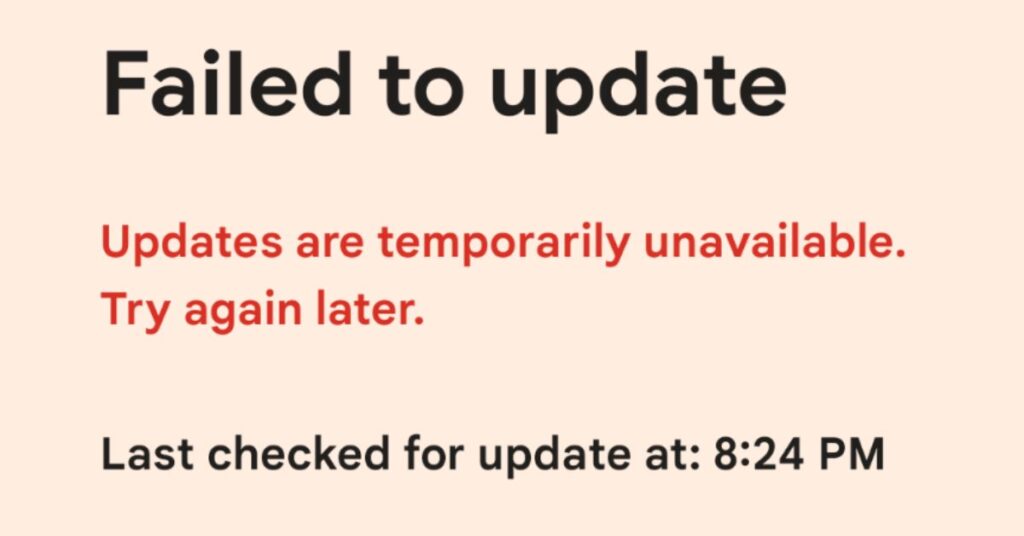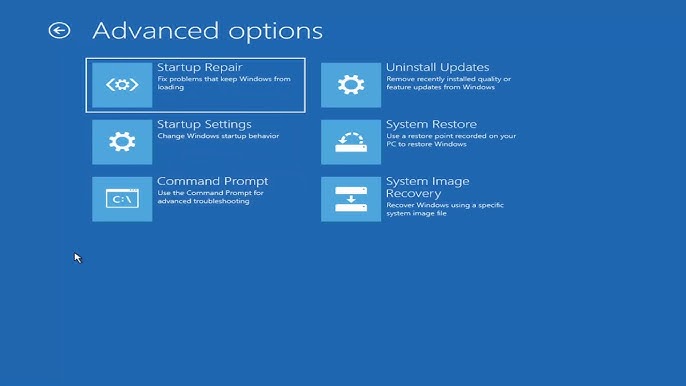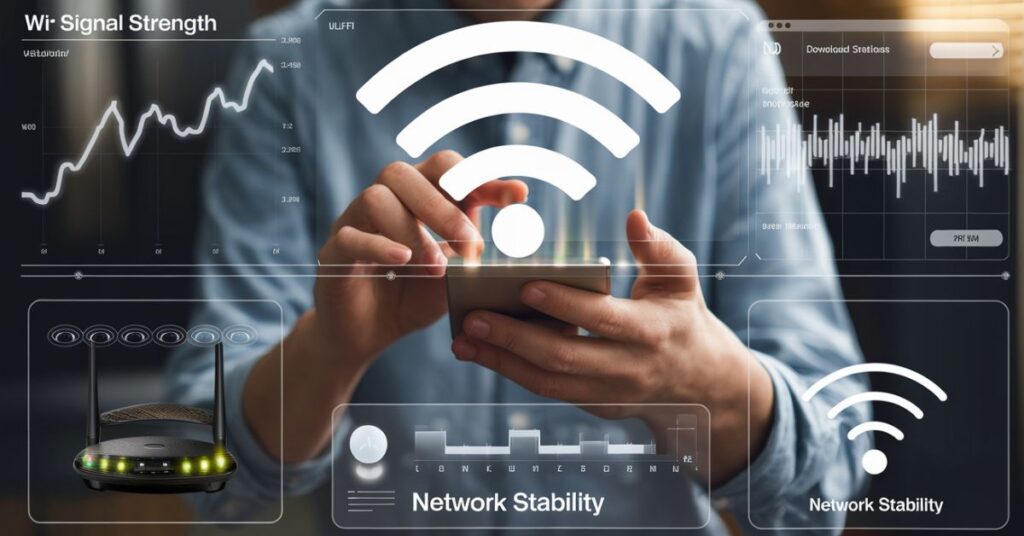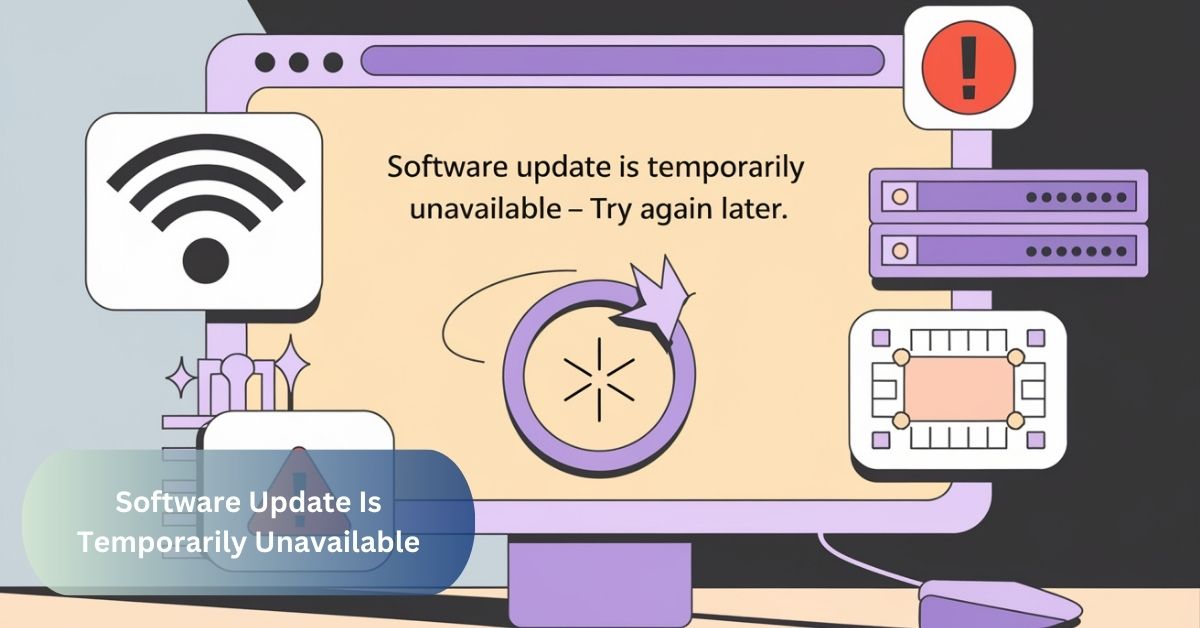I once faced the “Software Update is Temporarily Unavailable” message, and it kept popping up every time I tried. After restarting my device and waiting a bit, the update finally worked smoothly.
The “Software Update is Temporarily Unavailable” message means the update can’t be downloaded at the moment. It could be due to server issues, network problems, or device glitches.
Introduction To Software Update Is Temporarily Unavailable
The error message “software update is temporarily unavailable” appears when a device cannot access the update servers to download new software. This can happen for various reasons, such as server overload when too many users try to update at once, weak or unstable internet connections interrupting the download, or even temporary system glitches.
Sometimes, “software update is temporarily unavailable” is caused by low device storage, making it difficult to complete the process. In other cases, software bugs may trigger the “software update is temporarily unavailable” message, leading to delays in installing new updates.
Why Does The “Software Update Is Temporarily Unavailable” Error Occur?

- Server Overload: Too many people trying to update at the same time can overwhelm the servers.
- Weak Internet Connection: Unstable or slow internet may disrupt the download process.
- Low Device Storage: Not enough free space on the device can prevent the update from being installed.
- Software Glitches: Temporary bugs or system issues can trigger the error message.
- Network Configuration Issues: Problems with network settings may cause connection difficulties.
- Outdated Device Settings: Using old system settings can sometimes block new updates from downloading.
How To Fix The “Software Update Is Temporarily Unavailable” Error
1. Restart Your Device:
Restarting your device is a simple yet effective way to fix the “Software Update is Temporarily Unavailable” error. When you turn your device off and then back on, it can clear minor glitches that may be causing the issue. This quick reset often helps re-establish a connection to the update servers, allowing the update to proceed smoothly.
Read Also: Software Licensing Service Reported That The License Is Not Installed – Your Ultimate Guide!
2. Check Your Internet Connection:
- To improve your connection, try moving closer to your router, as a stronger Wi-Fi signal can help prevent interruptions during downloads and updates.
- Switch Networks: If possible, try connecting to a different Wi-Fi network. Sometimes, the current network might have issues affecting your device’s ability to update.
- Restart Your Router: Unplugging your router for a few seconds and then plugging it back in can refresh the connection and improve your internet speed.
3. Free Up Some Storage:
Freeing up storage on your device is crucial for resolving the “Software Update is Temporarily Unavailable” error. By deleting old files, unused apps, and large media, you can create enough space for the update to download successfully.
Advanced Solutions

If basic troubleshooting doesn’t work, consider trying some advanced solutions to fix the “Software Update is Temporarily Unavailable” error. These methods can help you bypass common issues and successfully download the update. Implementing these strategies may lead to a smoother update experience.
- Use a VPN: A virtual private network can help if your location is causing connection problems, allowing you to access different servers.
- Reset Network Settings: Going to your device’s settings and resetting the network can clear misconfigurations that block updates.
- Download Manually: For Mac users, manually downloading the update file from Apple’s website can help you avoid server issues.
- Check for Updates in Safe Mode: Booting your device in Safe Mode can disable unnecessary processes and help the update go through.
- Reinstall the Operating System: As a last resort, reinstalling the operating system can clear any persistent issues that prevent updates from completing.
Preventing The “Software Update Is Temporarily Unavailable” Error
1. Update During Off-Peak Hours:
Updating your device during off-peak hours can significantly improve your chances of avoiding the “Software Update is Temporarily Unavailable” error. These times, usually late at night or early in the morning, see fewer users trying to access the servers. With less traffic on the network, your device is more likely to connect smoothly and download the update without interruptions.
2. Maintain Device Health:
- Regularly Clear Cache: Periodically clearing your device’s cache can improve performance and prevent issues during updates.
- Keep Software Updated: Install minor updates as they become available to ensure your device runs smoothly and is ready for major updates.
- Manage Storage Wisely: Regularly check your storage and remove files or apps you no longer need to keep space available for future updates.
- Perform Device Restarts: Restart your device from time to time to refresh the system and clear any temporary glitches.
- Check Battery Health: Ensure your device’s battery is in good condition, as low battery health can affect performance and update capabilities.
Read Also: Gdb: The X86_64 Architecture Is Required For This Software.
3. Monitor Network Stability:

Monitoring network stability is essential for ensuring a smooth update process on your device. A reliable and strong internet connection helps avoid interruptions during downloads. Keep an eye on your Wi-Fi signal strength and check for any fluctuations that might affect performance. If you notice frequent disconnections or slow speeds, it may be worth troubleshooting your network or contacting your internet provider for assistance.
FAQ’s
1. Why does my iOS update say temporarily unavailable?
Your iOS update may say “temporarily unavailable” due to server overload when many users are trying to update at once. It can also happen because of network issues or insufficient storage space on your device.
2. Why am I not able to update my software?
You may not be able to update your software due to server overload, weak internet connections, or insufficient storage space on your device. Temporary glitches or outdated settings can also prevent the update from downloading successfully.
3. Why does a phone say temporarily unavailable?
A phone may say “temporarily unavailable” when it cannot connect to the update servers due to high traffic or network issues. This message can also appear if there isn’t enough storage space or if there are temporary software glitches affecting the device.
4. How can I fix my iPhone that says unavailable?
To fix an iPhone that says “unavailable,” start by restarting your device, as this can clear minor glitches. If the issue persists, check your internet connection, ensure there’s enough storage space, and consider resetting your network settings for a fresh start.
5. How to fix prepare for new iPhone temporarily unavailable?
To fix the “Prepare for New iPhone Temporarily Unavailable” issue, first, ensure your internet connection is stable and strong. If the problem persists, restarting your iPhone or waiting a while before trying again can often help resolve the issue and allow the setup to continue smoothly.
Conclusion:
Encountering the “Software Update is Temporarily Unavailable” message can be frustrating, but there are several ways to resolve it. By checking your internet connection, ensuring sufficient storage, and trying updates during off-peak hours, you can improve your chances of a successful installation.
Staying proactive about device maintenance and troubleshooting can help you avoid this issue in the future, making your update experience smoother and more efficient.
Read More:
- Android Studio Alternative Software – Take A Look Over Them!
- Linux Is Proprietary Software –The Open Source Operating System!
- Failed To Personalize The Software Update. Please Try Again – Fix Update Issues Now!

